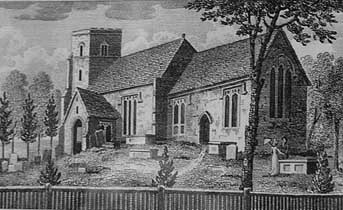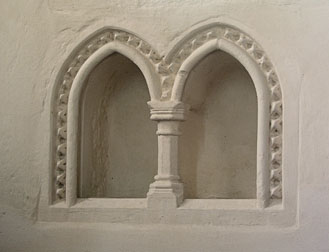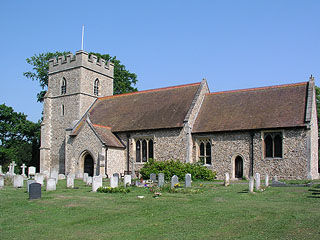In the middle of my tripos exams, Mark and I took advantage of a glorious Saturday to ride out and explore the southern edge of the county. We started off by going to have breakfast at the World Famous Comfort Café. Until the new stretch of the A11 was built, this was on the main road from London up to Norwich - and also, incidentally, on the way from the M11 to Bury St Edmunds. Consequently the Colburns used to pass it whenever we were visiting my grandparents in Suffolk. I had eaten there once, many years ago, but never frequently. Nevertheless, my parents used to have cheap breakfasts in there when, in the relative impoverishment of newly qualified teachers in the 1970s, they would drive up and be fed rhubarb by my grandmother. In those days it was much more of a lorries and motorbikes stop. Now, it advertises itself as a family café, but I remembered my fried breakfast (the first time ever I tasted black pudding, as it happens) with fondness, so I suggested to Mark that we stop off to fill ourselves up before visiting. Being stranded by the new A11 doesn't seem to have affected business, but we weren't terribly pleased with the quality of the food. My black pudding was nice, but the rest was both mediocre and meagre, and the coffee was awful. Yet another glowing childhood memory shattered.
 |
Just round the corner are the Abingtons, Little and Great, spread in a rough ring around some lovely water meadows. The two churches (both dedicated to St Mary) can be seen from each others' graveyards, so it's a wonder that one hasn't been made redundant. Of the two, we found Little Abington open. From the outside it looked like it had been very thoroughly restored, like most of the churches in the Cambridge area. We did note some long-and-short work on the corners of the nave, though. The doorway inside the porch also bespeaks antiquity - Pevsner thinks it's early Norman, but Mark and I wondered if it wasn't late Saxon. Not that it makes much difference, of course. The church guide mentioned that the base of the nave and the lower half of the tower are both Saxon, so we may be right. Next to the doorway is a mutilated stoup, which contained some eggs.
 |
Inside, the font of Purbeck marble is quite nice, I suppose, in a 'Well, it isn't quite Suffolk, but never mind' sort of a way. In the base of the tower is a tomb - rather an unusual position. There's an original Early English transept on the north side which is now filled by the organ. The screen seems to be original and has both Decorated and Perpendicular designs. The chancel itself is Early English but has been given the most thorough Victorianising of the lot. Not unlovely, but little to see save a splendid little double piscina of the 13th century. The guidebook notes that the octagonal column dividing the piscina is of the same design as the columns supporting the font, and also the pillars of the chancel arch, which suggests that they were all of a piece.
There's also a little wall monument in the chancel. It's in rather poor repair and doesn't have any great artistic merit, but the words of his widow for Oliver Dalton (who died aged 28 in 1618) are elegant, and I found them rather touching:
Knowe, gentle reader, that my full entent
Is to create a lasting monument
To manifest my love doth still survive
The which I beare him when he was alive.
He of his love hath left one pledge with me
That in the sonne I might the father see,
And so retayne his memorye in minde
Who was a freind to all, to me most kinde.
St Mary was open when we visited
